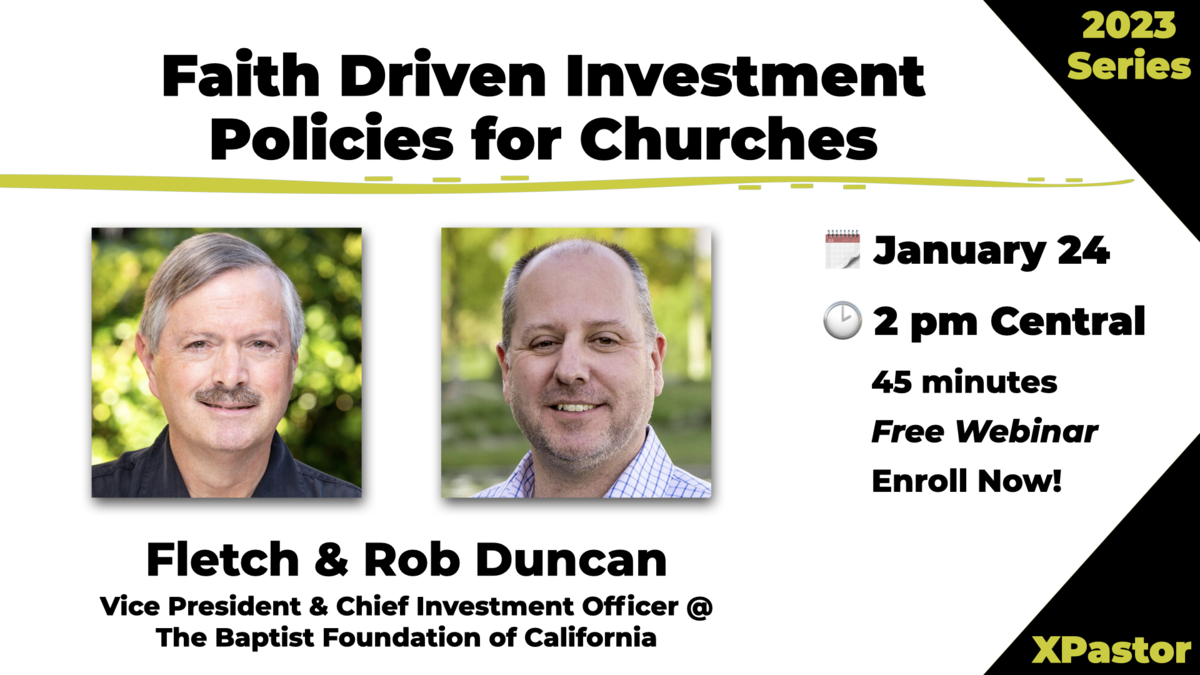We have all either heard or uttered the phrase, “How much is enough?” And the answer always seems to be, “Just a little bit more!” In business, we have also heard the phrase, “Cash is king.” During tough economic times, we have seen the fallout from having inadequate cash reserves—not only in business but also in the ministry world. For ministries, financial resources are limited. Determining how much cash reserves are needed can be difficult and often feels like a shot in the dark. This article outlines the necessary steps to determine the appropriate cash reserves and liquidity for your ministry.
Liquidity management
First, let’s define some terms. Most of us understand cash to be the amount of money we have in our accounts. However, to determine how much of this cash is available to use for general ministry expenses, subtract the donor-restricted funds held in cash reserves. Liquidity refers to the total amount of cash and cash equivalents (excluding donor-restricted funds but including any operating lines of credit). The combination of these is the total amount of funds a ministry has available for operating purposes, as illustrated in this chart (see PDF below).
Many leaders of non-profit organizations live with the tension of constantly fluctuating cash flow. Without proper cash flow management, an organization may be “profitable” based on its financial statements, yet unable to pay bills when they come due. This occurs because income doesn’t always come in at the same time that expenses occur. Plus, accrual accounting will distort the impact on cash balances. A common cash flow pattern for a ministry is more donation income at the end of the year and less donation income during the summer months. Expenses can also fluctuate for various reasons, such as the seasonal nature of some programs. If there’s an emergency, such as the need for a roof repair, or a new opportunity, such as responding to a community disaster, will there be adequate funds to cover these potential needs and opportunities?
Liquidity management is the practice of managing financial resources in a way that allows ministries to meet their financial obligations and accomplish their mission. Without adequate financial resources, ministries can be distracted from mission fulfillment as they cope with financial pressures.
Why is liquidity management important?
Careful liquidity management is often overlooked due to a false sense of security. What appear to be large cash balances can lead ministries to believe they have sufficient funds, forgetting that cyclical cash flow fluctuations, unanticipated expenses, the loss of key donors, a change in the economic landscape, or potential opportunities will quickly expose inadequate reserves. Even misapplication of the biblical principal that God is sovereign and will provide can lead some to set aside little or no reserves. Doing so ignores the biblical admonition of our responsibility to plan and set aside resources for lean times. A healthy tension exists between these two biblical truths.
The need for liquidity arises from the fact that daily cash inflow (income) seldom equals cash outflow (expenses). Further, drains on cash flow often happen without warning. Ministries with inadequate liquidity are likely to delay payments to vendors or lenders, tarnishing their reputation and requiring additional funds and time to manage the situation. In more serious cases, inadequate liquidity can cause salary delays, layoffs, and suspended mission programs. Some ministries have even closed due to inadequate liquidity. In fact, according to the U.S. Small Business Administration, one of the top reasons small businesses fail in the United States is due to inadequate liquidity.
John Zietlow, author of Cash & Investment Management for Nonprofit Organizations, explains: “We believe that the primary financial objective of a noncommercial nonprofit, expressed in its simplest form, is to achieve a target liquidity level.” So, for us to be shrewd but effective stewards of God’s resources, let’s take a look at how to figure out “how much is enough?”
How do I determine adequate liquidity for our ministry?
To forecast your ministry’s liquidity needs, you need to start by determining your cash reserve and liquidity needs based on three areas: Cash flow fluctuation, unplanned events, and potential opportunities.
Step One: Cash Flow Fluctuation
Start by looking at your historical cash balance trend. If possible, go back three years and chart out your unrestricted monthly cash balances during a calendar year. This should start identifying some trends in your cash flow cycle, revealing which months or seasons your ministry typically experiences its highest and lowest cash balances. Once you’ve identified these high and low points, determine the variation between them. This cash balance variation represents the amount of cash your ministry needed in the past and is a starting point to identify the amount you will need going forward. It is a best practice to add a percentage buffer to this cash balance variation to account for growth in your cash flow cycle. For most ministries, an average buffer of 15 to 50 percent would be appropriate. However, each ministry is unique and this range may not apply to yours.
Next, look at your budget to identify expected expenses during a specific period of time. Keep in mind, though, that budgets can be unrealistic if they are not prepared carefully or are outdated. To maintain a realistic outlook, you should prepare a cash flow forecast, which includes a real-time review of anticipated cash inflows and outflows for the next 12 to 24 months. Identify what has changed, or will change, in an upcoming period. With this information, a cash flow forecast can be compared to actual cash reserves to ensure that adequate funds are available. In addition, review your cash flow forecast quarterly, so your ministry will always have a realistic snapshot of your expected cash position.
The use of an operating line of credit to cover part of your cash balance variation is an optional way to build enough reserves when you either don’t have or want to use all your ministry’s cash resources. However, a line of credit should only be used to address cyclical variations in your cash flow cycle, because operating lines of credit must typically be paid in full for 30 to 60 days each year.
Step Two: Unplanned Events
Start this step by determining and anticipating events (risks) that might impact income or expenses, and then quantify appropriate reserves if these events were to occur. A good way to start your list is by looking back to see what unexpected expenses or events have occurred in the past.
Some examples would be the loss of expected rental income, increased expenses or the loss of income due to a natural disaster, increased expenses due to a senior leader leaving your ministry, or a key donor cutting back or no longer giving to your ministry. Many factors could cause a donor’s contribution levels to decrease, including: Moving away (typically an issue for a church), needing their funds for unexpected expenses, or passing away without designating your ministry as an estate recipient.
Once your list is complete, determine the likelihood of each event or expense occurring. For example, if your ministry leases out part of your property, how likely would it be for one of your tenants to leave? Then, determine the length of time before a new tenant would be in place and what the fiscal impact would be to your organization. This, then, is the process for calculating necessary reserves for unplanned events (risks):
- Determine a list of unplanned events that might impact your income or increase expenses.
- Determine the fiscal impact of these events. Keep in mind that the fiscal impact of some events will be ongoing, not just a single adjustment to your income or budget. Also think about how quickly would your ministry could respond to the event. Would you have any forewarning?
- Identify the likelihood of each event occurring.
Three best practices to consider:
- Sit down with your leadership team once a year and brainstorm what events could happen that would either cause income to be negatively impacted or expenses to increase.
- Know what percentage of total income is given by top donors. Because keeping donors’ identities confidential is important, begin by looking at the percentage of total income by top donors. While you may need to look at an individual’s giving, it’s best to focus on the issue rather than specific people. By knowing what percentage of income is given by top donors, a ministry can determine the fiscal impact of losing a key donor’s contributions and set an appropriate reserve.
- Perform a study to calculate funds needed for replacement of capital items. Identify life spans for key capital items such as HVAC systems, roofs, and carpet. For example, if your facility’s roof was replaced 20 years ago, and the original life span was 30 years, you’ll need to reroof in 10 years. If the project will cost $150,000, rather than facing an unbudgeted $150,000 expenditure 10 years from now, you could put $1,250 per month into reserve throughout the next 10 years and have the cash available when it’s time to replace the roof. Since your ministry has many similar capital items, documenting their life spans and planning accordingly will help you avoid significant cash outflows. Important note: This reserve replacement fund should be maintained separately and not considered as part of your operating cash reserves.
Step Three: Potential Opportunities
This is the place for dreams—new programs, new ministries, new staff members. For example:
- A potential staff person has just become available. If hiring this person would help fulfill your mission and funds are on reserve, you can seize the opportunity.
- Your city asks your ministry to partner in an after-school program. With cash reserves available, you can readily participate.
- A hurricane creates an opportunity for your ministry to serve those impacted by the disaster. You can serve these people because you have cash on reserve.
After you’ve identified the potential opportunities you would want to be able to immediately pursue, determine how much it would cost to do so. While you may be able to raise funds when the opportunity occurs, this often takes time. So determine the amount of funding you would need to begin pursuing the opportunity. This would be the amount to set aside in your cash reserves until additional funds became available to cover the total costs.
As you consider these opportunities, determine their importance to your ministry and mission and the likelihood of each opportunity occurring. You will need to set aside a higher percentage of funds for an opportunity that is critical to your mission and that has a high likelihood of occurring.
You should also have a policy in place to manage these reserve funds. Since the pursuit of opportunities requires strategic decisions, two or more staff or board members need to be involved in the decisions regarding disbursement of these funds. This might include a process by which congregants, donors, or staff members propose a need or opportunity, and a decision-making committee determines the proposal’s priority and its alignment with your ministry’s mission. If such a policy is not in place, you risk having your reserves go to less credible or less strategic requests.
For example: Your ministry has not budgeted for but wants to hire a program manager. Here are the steps to determining an appropriate cash reserve amount for this opportunity:
- Determine the importance of this opportunity based on your mission fulfillment goals.
- Initial costs: $10,000
- Monthly costs: $5,000
- It will take 6 months to raise the funding for this new position.
- $10,000 + ($5,000 x 6 months) = $40,000 in cash reserves
How much liquidity is adequate for your ministry?
Just as each ministry’s God-given mission is unique, adequate liquidity is also unique to each ministry. It takes discipline to determine your ministry’s needs, but if you don’t start now you may experience unnecessary pain and risk troublesome problems that could have been prevented.
While it is important for each ministry to calculate appropriate cash reserves based on the method outlined in this article, it can help to know “ballpark” cash reserve amounts for specific types of ministry organizations. Here are some general liquidity guidelines for churches, parachurch ministries, and schools. With each ministry type, it is always important to ask two questions: How close are your donors to your ministry? How quickly will they respond if a potential need or opportunity arises?
Churches
Faithful congregants are usually faithful givers. They attend regularly, participate in current ministries and programs, and keep their fingers on the pulse of the church. Because of their awareness, they tend to respond quickly to needs or opportunities. At the same time, this faithfulness can evaporate if scandals or discord arise, causing those faithful congregants to leave your ministry quickly—and take their donations with them. For these reasons, churches should have a cash reserve of 60 to 90 days of expenses.
Another thing to be aware of with church donors is that they aren’t typically aware of the cyclical cash flow pattern of giving. Therefore, when you give financial updates, rather than communicating that there is, for example, $750,000 in reserve—which can seem like a great deal of money—it’s better to say, “We have 90 days of expenses in reserve.” This communication helps donors understand that without their continued giving, expenses would not be paid after 90 days.
Parachurch Ministries
Parachurch ministries experience their own challenges. Because donors tend to be more distant, for example, they are often not as aware of your ministry’s needs, and it can be a lengthy process to inform them. For example, if a need or opportunity arises and your only method of communicating is by mail, it could take upwards of a month before you begin receiving donations to meet your need or fund an opportunity. This potential lag time requires that parachurch ministries have a larger cash reserve than churches, enough to cover 90 to 180 days of expenses.
Christian Schools
Christian schools differ because they operate much like small businesses, relying on timely payment of tuition and fees. A school that receives a significant amount of its funding at the beginning of the academic year may think it has adequate resources, but an unexpected event could cause a shortage of funds well before the school year ends. Because the timing of cash inflows and outflows can vary widely, cash reserves for schools also need to be higher than churches, especially at certain times of the year. Therefore, a school should have cash reserves to cover 90 to 120 days of expenses.
Determining your ministry’s operating liquidity
Once you’ve determined the amount needed to cover cash flow fluctuation, unplanned events, and potential opportunities, add the three totals together to determine how much liquidity you need to maintain in your cash reserves and short-term investments. If you don’t have adequate cash reserves available now, begin developing a plan to reach your target liquidity balance. This plan will contain different items, depending on the ministry. It may include specifics on reducing expenses, improving ministry operations efficiency, or maximizing cash inflow.
When calculating a cash reserve target for your ministry, rely on your staff and qualified volunteers for guidance. It’s also good to talk with ministry peers, outside consultants, and financial experts—such as accountants and your banking representative—to learn from their experience.
Above all, resist the temptation to ignore liquidity management; it is essential to the financial health of your ministry. While determining and maintaining an appropriate cash reserve requires wisdom, planning, and discipline, the time and effort you spend will make your ministry more effective by increasing the likelihood that you have enough financial resources to pursue your mission.
View charts and graphs in original PDF: Cash Reserves











